Cef III 1g of sol. 3.5 ml of a 1% solution of lidocaine 1’s powder for injection intravenously and intramuscularly
$10.40
Description
The instruction for medical use
of III® Tsef medicine
the Trade name
Tsef of III®
the International unlicensed
name Tseftriakson Lekarstvennaya a form
Powder for preparation of solution for intramuscular injections, 1.0 g complete with solvent (lidocaine a hydrochloride, solution for injections of 1% – 3.5 ml)
Structure
One bottle contains
active agent – a tseftriakson of sodium
(in terms of tseftriakson) 1.0 g,
solvent Lidocaine a hydrochloride, solution for injections of 1% – 3.5 ml
One ampoule (3.5 ml of solution) contains
active agent – lidocaine a hydrochloride
(in terms of 100% substance) 35.0 mg,
excipients: 0.1 M hydroxide sodium solution, water for injections.
The description
Crystal powder from almost white till yellowish or yellowish-orange color, is slightly hygroscopic.
Pharmacotherapeutic group
Antibacterial drugs for system use.
Beta laktamnye antibacterial drugs other.
Cephalosporins of the third generation. Tseftriakson.
The ATX J01DD04 code
the Pharmacological
Pharmacokinetics At properties parenteral administration tseftriakson well gets into fabrics and liquids of an organism. The bioavailability at intramuscular introduction is 100%. The maximum concentration in blood plasma at intramuscular introduction is reached in 2-3 hours. Reversibly contacts blood plasma albumine for 85-95% and this binding in inverse proportion to its concentration in blood.
Tseftriakson well gets into all fabrics and liquids of an organism.
Tseftriakson quickly diffuses in interstitial liquid where the bactericidal action concerning microorganisms, sensitive to it, keeps within 24 hours, well gets through a blood-brain barrier. Tseftriakson passes through a placental barrier and in small concentration gets to breast milk.
After administration of drug in a dose of 1-2 g of concentration of a tseftriakson within 24 hours collect in various bodies, fabrics and liquids of an organism, including in lungs, heart, bilious ways, a liver, tonsils, a middle ear and mucous a nose, bones and also spinal, pleural, synovial liquids and a secret of a prostate.
After intravenous use tseftriakson quickly gets into cerebrospinal fluid where bactericidal concentration concerning sensitive microorganisms remain within 24 hours. Tseftriakson gets through the inflamed meninx at children, including newborns. In 24 hours after intravenous administration in doses of 50-100 mg/kg of body weight (to newborns and babies, respectively) concentration of a tseftriakson in cerebrospinal fluid exceed 1.4 mg/l. The maximum concentration in cerebrospinal fluid is reached approximately in 4 hours after intravenous administration and makes, on average, 18 mg/l. In bacterial meningitis the average concentration of a tseftriakson in cerebrospinal fluid makes 17% of concentration in plasma, in aseptic meningitis – 4%. At adult patients with meningitis in 2-24 hours, after introduction of a dose of 50 mg/kg of body weight, concentration of a tseftriakson in cerebrospinal fluid many times over exceed the minimum overwhelming concentration for the most widespread causative agents of meningitis.
The general plasma clearance of a tseftriakson is 10-22 ml/min. The renal clearance equals 5-12 ml/min.
Elimination half-life makes about 8 hours at adult patients, at elderly 75 years – are more senior 16 hours.
At adult persons of 50-60% of a tseftriakson 40-50% are removed in not changed form with urine, – with bile.
At newborns about 80% of the entered dose of a tseftriakson it is removed by kidneys.
In renal failures or a liver at adults the pharmacokinetics of a tseftriakson almost does not change (perhaps, insignificant lengthening of elimination half-life) thanks to redistribution of functions. If function of kidneys is broken, discharge with bile increases and if liver pathology takes place, then removal by kidneys amplifies.
Pharmacodynamics
Tsef III® – a tsefalosporinovy antibiotic of a broad spectrum of activity of the III generation.
Has bactericidal effect due to oppression of synthesis of a cell wall of microorganisms.
Tseftriakson possesses a broad spectrum of activity concerning gram-negative and gram-positive microorganisms. Vysokoustoychiv to the majority β-лактамаз (as penicillinases, and tsefalosporinaz), developed by gram-positive and gram-negative bacteria.
Tseftriakson is usually active concerning the following microorganisms:
Gram-positive aerobes
of Staphylococcus aureus (metitsillinochuvstvitelny), Staphylococci coagulase-negative, Streptococcus pyogenes (ß – hemolytic, groups A), Streptococcus agalactiae (ß – hemolytic, groups B), ß – hemolytic streptococci (groups And, C), Streptococcus viridans, Streptococcus pneumoniae.
Note. Metitsillinoustoychivye Staphylococcus spp. rezistentna to cephalosporins, including to a tseftriakson. As a rule, Enterococcus faecalis, Enterococcus faecium and Listeria monocytogenes are also steady.
Gram-negative aerobes
of Acinetobacter lwoffi, Acinetobacter anitratus (mainly, A. baumanii) *, Aeromonas hydrophila, Alcaligenes faecalis, Alcaligenes odorans, alkaligenopodobny bacteria, Borrelia burgdorferi, Capnocytophaga spp., Citrobacter diversus (including C. amalonaticus), Citrobacter freundii *, Escherichia coli, Enterobacter aerogenes *, Enterobacter cloacae *, Enterobacter spp. (other) *, Haemophilus ducreyi, Haemophilus influenzae, Haemophilus parainfluenzae, Hafnia alvei, Klebsiella oxytoca, Klebsiella pneumoniae **, Moraxella catarrhalis (before Branhamella catarrhalis), Moraxella osloensis, Moraxella spp. (other), Morganella morganii, Neisseria gonorrhea, Neisseria meningitidis, Pasteurella multocida, Plesiomonas shigelloides, Proteus mirabilis, Proteus penneri *, Proteus vulgaris *, Pseudomonas fluorescens *, Pseudomonas spp. (other) *, Providentia rettgeri *, Providentia spp. (other), Salmonella typhi, Salmonella spp. (netifoidny), Serratia marcescens *, Serratia spp. (other) *, Shigella spp., Vibrio spp., Yersinia enterocolitica, Yersinia spp. Other.
* Some isolates of these types are resistant to a tseftriakson, mainly, owing to education laktamaz, coded by chromosomes.
** Some isolates of these types are steady owing to formation of a number plazmido-mediated laktamaz.
Note. Many strains of the above-stated microorganisms polyresistant to other antibiotics, such as aminopenicillin and ureidopenicillin, cephalosporins of the first and second generation and aminoglycosides, are sensitive to a tseftriakson.
Treponema pallidum is sensitive to a tseftriakson. Clinical trials show what tseftriakson has good efficiency concerning primary and secondary syphilis.
Behind very small exceptions, clinical P.aeruginosa isolates are resistant to a tseftriakson.
Anaerobe bacterias
of Bacteroides spp. (zhelchechuvstvitelny) *, Clostridium spp. (except for C. difficile), Fusobacterium nucleatum, Fusobacterium spp. (other), Gaffkia anaerobica (before Peptococcus), Peptostreptococcus spp.
* Some isolates of these types are resistant to a tseftriakson because of education β-лактамаз.
Note. Many strains of the β-lactamazoforming Bacteroides spp. (in particular, B. fragilis) are steady. Also Clostridium difficile is steady.
Indications
– sepsis
– meningitis
– lower respiratory tract infections (especially pneumonia)
– infections of ENT organs
– infections of abdominal organs (peritonitis, infections
of biliary tract and digestive tract)
– infections of bones, joints, soft tissues, skins, wound fevers
– infections of kidneys and urinary tract
– infections of genitals, including gonorrhea
– infections at patients with the weakened immunity
– preoperative prevention of infectious complications
the Route of administration and doses
the Recommended doses
For adults and children are more senior than 12 years a standard therapeutic dose Tsef of III® makes 1 g once a day.
In heavy infections: 2-4 g once a day.
Duration of treatment depends on a course of the disease. Administration of drug should be continued the patient within at least 48-72 hours after normalization of temperature and confirmation of an eradikation of the activator.
For newborns (to two-week age) the dose makes 20-50 mg/kg/days.
For children from 15 days of life to 12 years the daily dose makes 20-50 mg/kg once a day. In heavy infections – up to 80 mg/kg/days.
Children with body weight have 50 kg and appoint doses for adults more.
Patients of advanced age
dose adjustment of drug at satisfactory function of kidneys and a liver is not required.
The renal and liver failure
with disturbance of renal function is not required From patients dose adjustment.
Only in case of a heavy renal failure (clearance of creatinine less than 10 ml/min.) the daily dose Tsef should not exceed III® 2 g.
Dose adjustment on condition of absence of renal failures is not required from patients with an abnormal liver function.
In the profound abnormal liver functions and kidneys and also at the patients who are on a hemodialysis it is necessary to watch concentration of a tseftriakson in blood plasma as the speed of its removal at these patients can decrease.
Gonorrhea
the Single dose makes 250 mg, once intramusculary.
Prevention of postoperative infections
Depending on degree of infectious risk, is entered by 1-2 g of a tseftriakson once in 30–90 min. prior to operation.
In colorectal surgery the simultaneous introduction Tsef is recommended to III® in a dose of 2 g intramusculary in combination with antianaerobic antibacterial drugs.
Meningitis
In bacterial meningitis at babies and children of younger age treatment begin with a dose 100 mg/kg (but no more than 4 g) once a day. After identification of the activator and determination of its sensitivity the dose can be reduced respectively.
Introduction
Solutions of drug have to be used at once after preparation.
For intramuscular introduction of 1 g of drug dissolve 1% of solution of lidocaine in 3.5 ml and enter deeply into a gluteus. It is recommended to enter no more than 1 g into the same muscle.
The solution containing lidocaine cannot be entered intravenously!
Solutions of the drug Tsef III® cannot be mixed or added to the solutions containing other antimicrobial drugs or solvents because of possible incompatibility.
Side effects
Often (≥ 1%, & lt, 10%)
– diarrhea, nausea, vomiting
Infrequently (≥ 0.1%, & lt, 1%)
– allergic skin reactions, such as spotty and papular rash,
a dieback, a small tortoiseshell, dermatitis, an itching, hypostasis
Seldom (≥ 0.01%, & lt, 0.1%)
– stomatitis, a glossitis (are usually mild and disappear after
the treatment termination)
– increase in creatinine in blood serum, an oliguria, a glucosuria,
a hamaturia
– mycoses of a genital tract
– the superinfections caused by mushrooms and other resistant microorganisms
– a headache, dizziness
– a neutropenia, a leukopenia, an eosinophilia, thrombocytopenia, anemia (including
hemolytic anemia), insignificant lengthening of a prothrombin
time
– fibrillation disturbance, an agranulocytosis (& lt, 500m3), in the main ambassador of 10 days of treatment at the general dose of 20 g and more
– anaphylactic reactions (bronchospasm), acute anaphylaxis
– increase in hepatic enzymes (ALT, nuclear heating plant, alkaline phosphatase) in
blood serum
– morbidity in the injection site, a fever, temperature increase
it is Very rare (& lt, 0.01%)
– positive test of Koombs, an agranulocytosis
– pseudomembranous colitis, pancreatitis
– a multiformny erythema, Stephens-Johnson’s syndrome, a Lyell’s disease,
a toxic epidermal necrolysis
– precipitation of calcic salt of a tseftriakson in a gall bladder
– formation of concrements in kidneys, mainly, at children is more senior than 3 years which were receiving or high daily doses of drug (more than 80 mkg/kg a day), or cumulative doses more than 10 g and also having accessory factors of risk (liquid consumption restriction, a bed rest, etc.). Formation of concrements in kidneys can lead to an anury and a renal failure. This undesirable phenomenon has reversible character and disappears after the therapy termination by drug.
Contraindications
– hypersensitivity to a tseftriakson, beta laktamnym to antibiotics,
penicillin or other components of drug
– hypersensitivity to solvent to lidocaine
– a hyperbilirubinemia at newborn and premature newborns
– premature newborns up to 41 weeks (week of pregnancy + weeks of life), the full-term newborns to 28-day age:
· with jaundice, a hypoalbuminemia and acidosis, as it diseases in which insufficiency of binding of bilirubin is probable
· which appoints or supposes intravenous treatment kaltsiysoderzhashchy solutions because of risk of formation of precipitated calcium superphosphates of calcic salts of a tseftriakson.
Medicinal interactions
At simultaneous use of high doses of the drug Tsef of III® and loopback diuretics (for example, furosemide) renal failures were not observed. Instructions on the fact that Tsef of III® increases nephrotoxicity of aminoglycosides no. Alcohol intake after administration of drug was not followed by disulfiramopodobny reaction.
Tseftriakson does not support N-methylthiotetracindery group which could cause intolerance of ethanol and bleeding that is inherent in some other cephalosporins. Probenetsid does not influence removal of a tseftriakson.
The antagonism between chloramphenicol and tseftriaksony is found. Therefore, it is recommended to be careful at co-administration of these drugs.
Tseftriakson pharmaceutical is incompatible with amsakriny, Vancomycinum, flukonazoly, aminoglycosides.
Tseftriakson can negatively affect efficiency of oral hormonal contraceptives. Therefore, it is reasonable to use additional (non-hormonal) methods of contraception during treatment and within a month after treatment.
Tsef solution III® pharmaceutical is incompatible with the solutions containing calcium ions (for example, Ringer’s solution, Hartman).
Special instructions
As well as at use of other cephalosporins, were registered anaphylactic reactions, including from the death, even in cases when the patient had no allergic reactions in the anamnesis.
Before use of the drug Tsef III® it is necessary to establish whether were noted in the past at the patient of reaction of hypersensitivity to a tseftriakson, other cephalosporins, penicillin and beta laktamnym to antibiotics.
With care appoint to patients at allergic reactions to medicines, other allergic diathesis in the anamnesis. At emergence of allergic reactions against the background of therapy, drug should be cancelled.
The cases from the death connected with formation of precipitated calcium superphosphates of calcium with tseftriaksony in lungs and kidneys of the premature and full-term newborns aged up to 1 month are described. At least, one of them received tseftriakson and calcium at different times and through various venous accesses. The messages confirming formation of intravascular precipitated calcium superphosphates at patients except the newborns who received treatment tseftriaksony and kaltsiysoderzhashchy solutions or other kaltsiysoderzhashchy drugs are not found in available scientific data. The researches In Vitro showed that at newborns calcium-tseftriakson in comparison with other age groups is raised risk of formation of precipitated calcium superphosphates.
Despite availability of data on formation of intravascular precipitated calcium superphosphates only at newborns at use of a tseftriakson and kaltsiysoderzhashchy infusion solutions or any other kaltsiysoderzhashchy drugs, at patients of any age tseftriakson it is not necessary to mix or enter along with kaltsiysoderzhashchy infusion solutions, even using various venous accesses. However at patients is more senior than 28-day age tseftriakson and kaltsiysoderzhashchy solutions can be applied consistently one by one if intravenous accesses on different parts of the body are used or if infusional lines change or are completely washed out between injections by normal saline solution to avoid sedimentation. At patients who need continuous injection of kaltsiysoderzhashchy solutions it is necessary to consider the possibility of use of alternative antibacterial treatment which does not cause similar risk of precipitation. If use of a tseftriakson is necessary for the patients who are on long parenteral nutrition solution for parenteral nutrition and tseftriakson can be entered at the same time, but through various venous accesses on various sites. Alternatively, administration of solution for parenteral nutrition can be stopped for infusion of a tseftriakson.
As well as at use of other cephalosporins, at
the Tsef drug treatment III® the development of autoimmune hemolytic anemia is possible.
Hard cases of hemolytic anemia, including from the death were registered, during treatment of both adults, and children.
Newborns with a hyperbilirubinemia and premature newborns
it is not recommended to appoint drug newborn with a hyperbilirubinemia and the premature newborn as tseftriakson can force out bilirubin from communication with seralbumin, increasing risk of developing bilirubinovy encephalopathy at such children.
At development in the patient who is on treatment tseftriaksony the anemia cannot exclude the diagnosis cephalosporin – the associated anemia and it is necessary to cancel drug treatment before clarification of the reason.
Change of laboratory indicators
In rare instances at patients false positive results of test of Koombs can be observed.
False positive results can be received when determining glucose in urine therefore during therapy Tsef III® if necessary needs to determine a glucosuria only by a fermental method.
An antibiotic – the associated colitis, pseudomembranous colitis
As well as at use of the majority of other antibacterial drugs, at treatment Tsef III® registered cases of development of the diarrhea caused by Clostridium difficile (C. difficile), various weight: from slight diarrhea to colitis from the death. Treatment by antibacterial drugs suppresses normal microflora of a large intestine and provokes growth of C.difficile. In turn, C. difficile forms toxins A and B which are factors of pathogenesis of the diarrhea caused by C. difficile. S.’s strains of difficile which are hyper producing toxins are causative agents of infections with high risk of complications and mortality, owing to their possible resistance to antimicrobic therapy, treatment can demand colectomy. It is necessary to remember a possibility of development of the diarrhea caused by C. difficile at all patients with diarrhea after antibiotic treatment. Careful collecting the anamnesis since cases of developing of the diarrhea caused by C. difficile later after therapy are noted more than 2 months by antibiotics is necessary. At suspicion or confirmation of the diarrhea caused by C. difficile the cancellation of the current antibiotic treatment difficile which is not directed to S. perhaps will be required. According to clinical indications the corresponding treatment with input of the fluid and electrolytes, proteins, antibiotic treatment concerning S. difficile, surgical treatment has to be appointed.
Due to the use of a tseftriakson, cases of the antibiotiko-associated diarrhea, colitis and pseudomembranous colitis were registered. These diagnoses have to be differentiated in case of development in the patient of diarrhea during or soon after the end of treatment. Administration of drug has to be stopped when developing heavy diarrhea and/or diarrhea with blood during use of drug and the corresponding therapy is appointed.
Tseftriakson it is necessary to use with care at persons with gastrointestinal diseases (especially colitis) in the anamnesis.
As well as at treatment by other antibacterial drugs, at therapy Tsef of III® can develop superinfection. Prolonged use of a tseftriakson can bring to the overgrowth of insensitive microorganisms, such as Enterococci and Candida spp.
At elderly people and the weakened patients during use Tsef of III® can be required control of a prothrombin time and additional prescribing of vitamin K (10 mg/week) prior to the beginning of or during treatment.
Tseftriakson can pretsipitirovat in a gall bladder therefore can give the shadows at ultrasonography which are mistakenly taken for stones. It can be observed in any age groups, but a thicket at babies and children of younger age who received the big dosages of drug expected the child’s weight. In children’s practice dosages more than 80 mg/kg of weight owing to the increased risk of formation of precipitated calcium superphosphates in a gall bladder are contraindicated. Acute cholecystitis, formation of stones in a gall bladder were not clinically proved at the children accepting tseftriakson. These states are passing and disappear after end or the termination of therapy by drug and do not demand treatment.
Shadows which can be mistakenly taken for stones of a gall bladder are precipitated calcium superphosphates of calcic salt of a tseftriakson, and disappear after the termination or completion of drug treatment. Similar changes seldom give any symptomatology, in cases of development of symptoms the conservative treatment is recommended. The decision on drug withdrawal remains to the discretion of the attending physician.
At the patients receiving tseftriakson exceptional cases of the pancreatitis developing perhaps, owing to obstruction of bilious ways are described. Most of these patients had risk factors of stagnation in bilious ways, for example, earlier carried out therapy, a serious illness and parenteral nutrition already before. At the same time it is impossible to exclude a starting role in development of pancreatitis, formed under the influence of drug, precipitated calcium superphosphates in bilious ways.
Safety and efficiency of drug at newborns, babies and children of younger age were defined for the dosages described in the section Route of Administration and Doses. Researches showed what like other cephalosporins tseftriakson can force out bilirubin from communication with seralbumin.
At long-term treatment it is necessary to carry out complete analysis of blood regularly.
The renal and liver failure
is required dose adjustment and monitoring of concentration of drug in plasma From the patients with a heavy liver or renal failure and also who are on a hemodialysis.
In case of long-term treatment it is regularly necessary to control a pattern of peripheral blood, indicators of a functional condition of a liver and kidneys.
One gram of a tseftriakson contains about 3.6 mmol of sodium. It should be considered to the patients who are on sodium – a controlled diet.
Pregnancy and the period of a lactation
Tseftriakson gets through a placental barrier, into breast milk. When assigning the nursing mothers should be careful.
Adequate and strictly controlled researches of safety of use of a tseftriakson at pregnancy were not conducted. Tseftriakson should not be used during pregnancy if to it there are no absolute indications.
The feature of influence on ability to run the vehicle or potentially dangerous mechanisms
Should mean that at reception Tsef emergence in rare instances of such side effect as dizziness therefore it is recommended to be careful at control of motor transport or work with potentially dangerous mechanisms is possible III®.
Overdose
Symptoms: nausea, vomiting, diarrhea.
Treatment: symptomatic. There is no specific antidote. The hemodialysis and peritoneal dialysis are inefficient.
A form of release and packing
On 1.0 g of active agent in bottles from a tube glass, hermetically corked by rubber bungs, pressed out by caps the aluminum or import combined caps of FLIPP OFF.
On each bottle paste the label from paper label or writing, or the label self-adhesive import production.
On 3.5 ml of solvent in ampoules with a capacity of 5 ml from neutral glass.
On 1 bottle of drug together with 1 ampoule of solvent place in a pack from cardboard with a partition from the same cardboard for a retail container or chrome ersatz.
Put the approved instructions for medical use in a pack in the state and Russian languages and the scarificator ampoule. When packing ampoules of lidocaine of a hydrochloride of 1% with notches, rings and points the scarificators do not invest.
It is allowed to apply the text of the approved instruction for medical use in the state and Russian languages on a pack.
To Store storage conditions in the dry, protected from light place, at a temperature not higher than 30 wasps.
To store out of children’s reach!
A period of storage
3 years
After an expiration date not to use drug.
Prescription status
According to the prescription
JSC Khimfarm Producer,
Republic of Kazakhstan, Shymkent, Rashidov St., 81
the Owner of the registration certificate
of JSC Khimfarm, the Republic of Kazakhstan
the Address of the organization accepting in the territory of the Republic of Kazakhstan claims from consumers on quality of products (goods)
of JSC Khimfarm,
KAZAKHSTAN, Shymkent, Rashidov St., 81 Phone number 7252 (561342)
Fax number 7252 (561342)
to Develop the E-mail address of infomed@santo.kz
Additional information
| Ingredient |
|---|





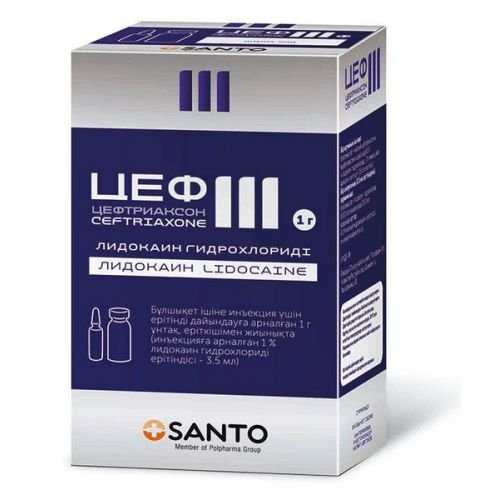
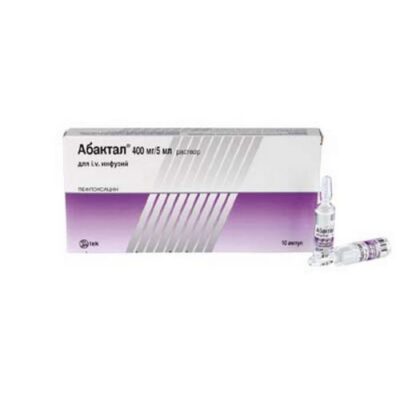
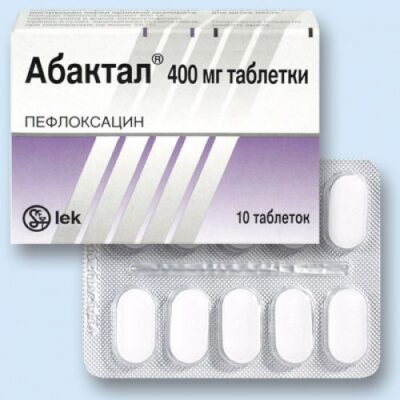
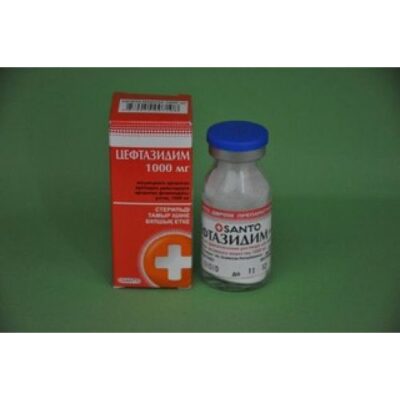
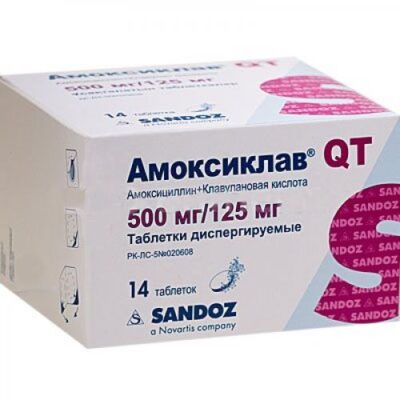
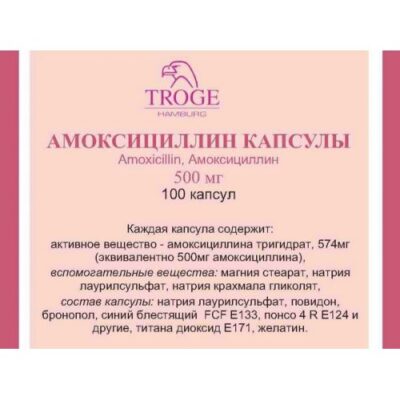
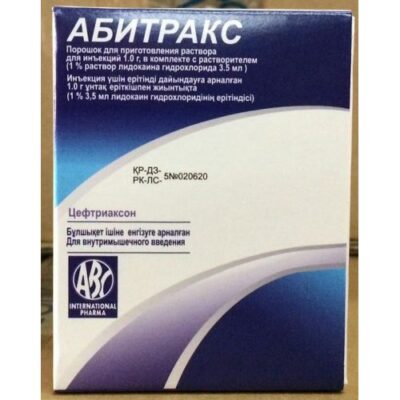
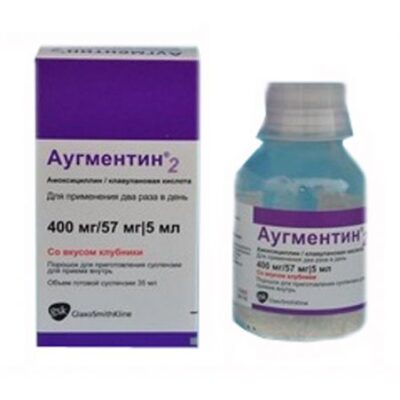
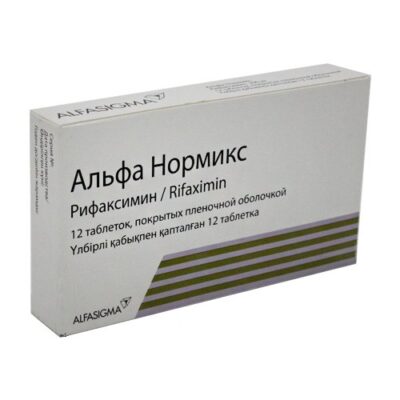
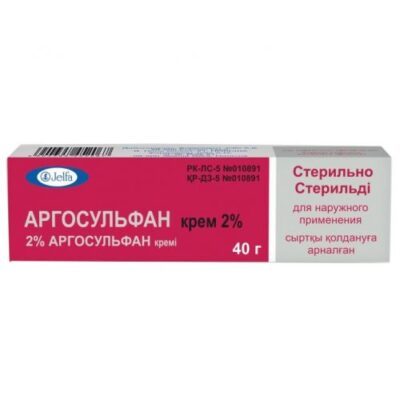
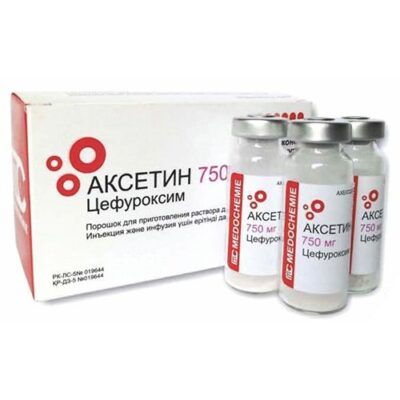






Reviews
There are no reviews yet.